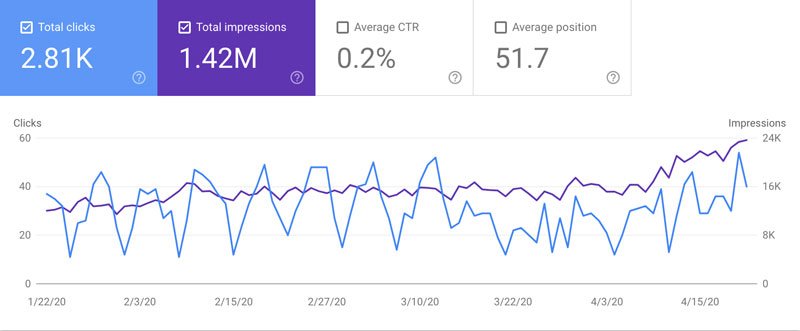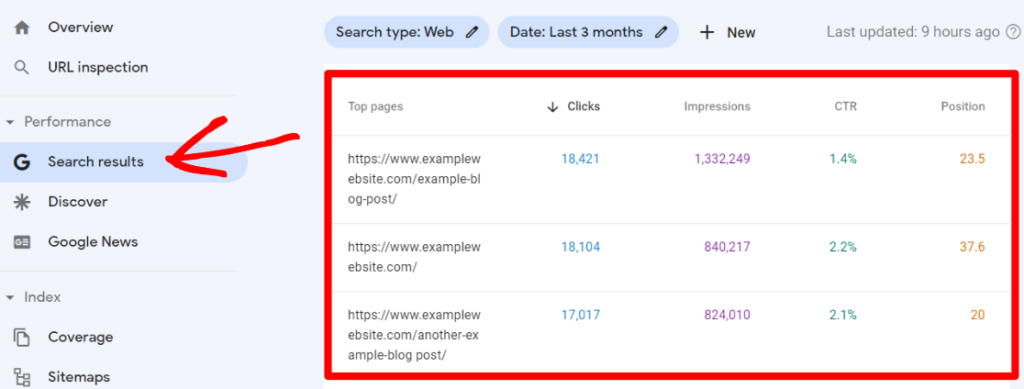Diving deeper into Google Search Console, we sought insights from SEO experts and business founders on the underutilized metrics that shed light on SEO performance. From assessing “Crawled – Not Indexed” content to improving backlink profiles and internal links, discover nine invaluable metrics these professionals use to gauge the success of their SEO strategies.
Table of Contents
Assess 'Crawled - Not Indexed' Content
I like to use the “Crawled – Currently Not Indexed” tab. This will show you URLs you have published, Google has crawled, but hasn’t added to their index. It’s a clear sign the content needs improving to be competitive and worthy of indexing. More often than not, pages appearing in this tab have been indexed within a few days after I’ve made improvements and resubmitted them to Google, even without link-building.
Belynda Scarsbrook, SEO Specialist, Belynda Scarsbrook
Integrate Multimedia for Enhanced SEO
One key metric from Google Search Console that’s often underused is Click-Through Rate (CTR). It’s one thing to rank in the top three, but it’s another to have compelling enough metadata to actually draw clicks. High CTR indicates that your meta titles and descriptions are resonating with users, encouraging them to visit your site. By analyzing and optimizing CTR, you can improve your content’s appeal in search results, ultimately driving more traffic and engagement without necessarily changing your rankings.
Tim Pelletier, Owner/SEO Consultant, Tim Pelletier Consulting, LLC

Focus on Page Rankings
Instead of queries, I look at what pages are ranking. One page can be built to rank for a whole ecosystem of synonymous or related keywords. I actually spend more time looking at “pages” data and find it more valuable. You can also look at CTR to see which pages have higher opportunity. If a page is getting a lot of impressions but few clicks, it’s in a prime spot to be optimized.
Ryan Cecil, SEO Analyst, Bold
Monitor Enhancements for SEO
One often-overlooked gem in Google Search Console is the “Enhancements” section. This area gives you a peek into how well your site meets Google’s standards for features like AMP, Mobile Usability, and Core Web Vitals. For example, the Core Web Vitals report sheds light on your site’s loading speed, interactivity, and visual stability—all key for a great user experience and now important for SEO rankings.
Keeping an eye on these metrics helps you boost user engagement and satisfaction, ultimately driving your SEO success. So, don’t just focus on keywords and traffic; dive into the Enhancements section for a fuller picture of your site’s performance.
Emma Baker, SEO Analyst, Saltbox Solutions
Track Impressions Over Time

In Google Search Console, I’m always looking at impressions. When it comes to getting website traffic from SEO, you have to show up in search results in the first place. I’m not looking for a specific number of impressions here, but rather I want to see a general upward trend in impressions over time. From there, we can diagnose other SEO issues. Are people clicking through? Once people get to the website, are they converting to leads and buyers? Why or why not?
Amanda Hamilton, Website & SEO Specialist, Anchor ‹A› Digital Design Co.
Evaluate Average Position Trends
Other than the standard keyword rankings and traffic, I find the “Average Position” metric in Google Search Console to be incredibly valuable and often underused. Average Position provides a clear picture of how your pages are performing in search results over time. By monitoring this metric, you can identify trends and understand whether your SEO strategies are improving your search visibility.
In my experience, focusing on Average Position has revealed insights that traffic data alone couldn’t. For instance, I once worked with a client who had a consistent increase in traffic but a declining Average Position. By digging deeper, we discovered that while certain high-traffic keywords were performing well, many other targeted keywords were slipping in rankings. Addressing this allowed us to refine our content and link-building strategies, ultimately stabilizing and improving their overall search visibility.
Monitoring Average Position helps ensure a comprehensive understanding of your SEO performance, enabling you to make informed adjustments that drive long-term success.
Brandon Leibowitz, Owner, SEO Optimizers
Utilize the 11-20 Position Strategy

Filter for the 11-20 principle. Find a high-impression (sort by impressions to start with) keyword that is ranking outside the top 10 (set a position filter greater than 10). This is how you identify pages in the 11-20 positions that are ripe for optimizations.
Next, we look at the pages that are being found for this query. The page with the highest impressions and clicks is likely your primary. The other pages (if there are any) are referred to as “keyword cannibalizing” your main page. My approach for these pages is just to use them as internal linking opportunities to help push your main page higher. (Google already considers them relevant, right? So, might as well use them.)
Next, you can then go and do further on-page and content optimization for the primary page and push it from page 2 to page 1.
Trevor Stolber, Co-Founder, CTO, VibeLogic
Analyze 'Time on Page' Impact
Don’t forget to consider the “time on page” metric. If readers like the articles you’re publishing, they’ll spend more time reading them, and this factor can help your site rank better.
Eric Novinson, Founder, This Is Accounting Automation
Improve Backlink Profile and Internal Links
Backlink profile analysis is critical for SEO ranking. This data tells search engines the authority and credibility of your site. The more high-authority sites that link to your website, the better your search engine rankings. We’ve also found internal linking to be highly beneficial. These links help people navigate our site efficiently and guide search engines in crawling and indexing our pages. We continuously analyze our backlink profile and internal links to identify gaps and optimize our site’s SEO performance to improve our rankings.
Daniel Kroytor, Founder and Director, Tailored Pay





























